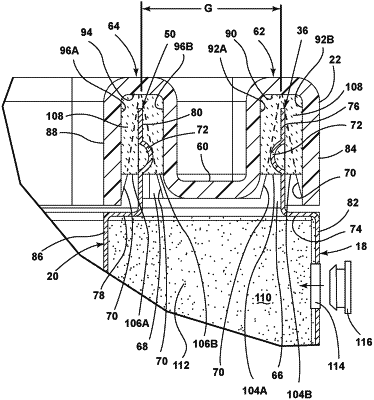| CPC F25D 23/085 (2013.01) [F25D 23/064 (2013.01); B29C 65/48 (2013.01); F25D 2201/12 (2013.01); F25D 2201/122 (2013.01); F25D 2201/14 (2013.01); F25D 2400/00 (2013.01); F25D 2500/02 (2013.01)] | 20 Claims |

|
1. A method of making a vacuum insulated refrigerator structure, the method comprising:
providing at least one sheet of material;
forming a wrapper from the at least one sheet of material whereby the wrapper has a first opening and a first edge extending around the first opening;
forming a liner from the at least one sheet of material whereby the liner has a second opening and a second edge extending around the second opening;
positioning the liner inside the wrapper with the first and second edges being spaced apart to form a first gap therebetween, and to form a cavity between the wrapper and the liner;
positioning a thermal bridge across the first gap, wherein the thermal bridge includes an elongated first channel having a base surface and opposite side surfaces extending transversely from the base surface, the elongated first channel including a plurality of locating structures protruding inwardly from the opposite side surfaces;
inserting a selected one of the first and second edges into the first channel;
causing the selected one of the first and second edges to contact at least one locating structure as the selected one of the first and second edges is inserted into the first channel to form edge gaps on opposite sides of the selected one of the first and second edges and the opposite side surfaces of the first channel;
positioning curable sealant in the first channel in the edge gaps on opposite sides of the selected one of the first and second edges;
curing the curable sealant to form an airtight seal;
causing porous material to at least partially fill the cavity between the wrapper and the liner;
forming a vacuum in the cavity; and
sealing the cavity to maintain the vacuum.
|